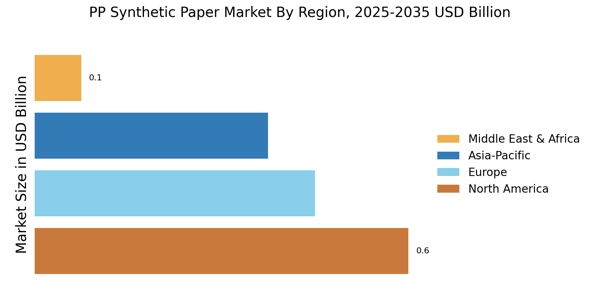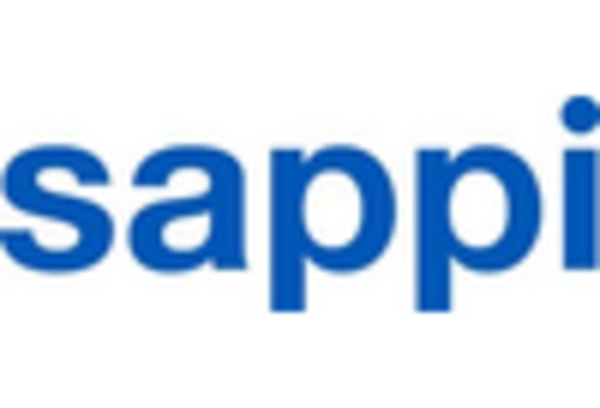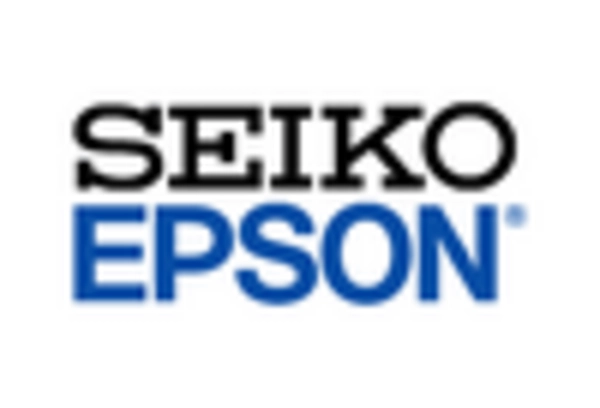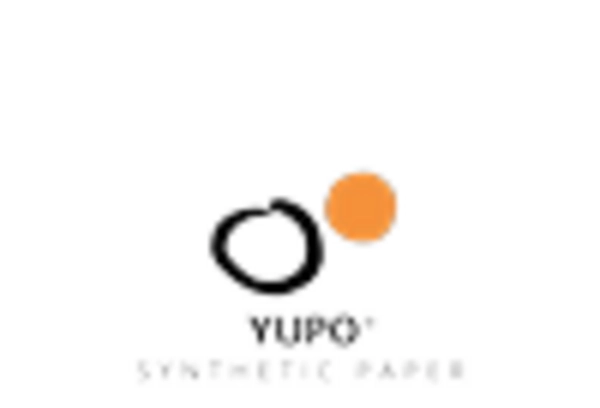Digital Printing Demand
The rising demand for digital printing is significantly influencing the PP Synthetic Paper Market. As businesses seek to enhance their branding and marketing efforts, the need for high-quality, visually appealing printed materials has surged. PP synthetic paper, known for its excellent print quality and durability, is increasingly being utilized in various applications, including signage, labels, and packaging. Recent market analyses indicate that the digital printing segment is expected to grow at a compound annual growth rate of approximately 7% in the coming years. This growth is driven by the flexibility and efficiency that digital printing offers, allowing for quick turnaround times and customization. Consequently, the PP synthetic paper market is likely to benefit from this trend, as more companies opt for synthetic paper solutions to meet their digital printing needs.
Growing Packaging Industry
The expansion of the packaging industry serves as a significant driver for the PP Synthetic Paper Market. With the increasing demand for innovative and sustainable packaging solutions, PP synthetic paper has emerged as a preferred choice for many manufacturers. Its lightweight, durable, and moisture-resistant properties make it ideal for various packaging applications, including food and beverage, cosmetics, and consumer goods. Recent statistics suggest that the packaging sector is projected to grow at a rate of around 5% annually, further boosting the demand for PP synthetic paper. As companies strive to enhance their packaging aesthetics while ensuring functionality, the adoption of synthetic paper is likely to rise. This trend is expected to create new opportunities for manufacturers and suppliers within the PP synthetic paper market.
Sustainability Initiatives
The increasing emphasis on sustainability is a pivotal driver for the PP Synthetic Paper Market. As consumers and businesses alike become more environmentally conscious, the demand for eco-friendly materials rises. PP synthetic paper, being recyclable and often made from non-toxic materials, aligns well with these sustainability goals. In recent years, the market has seen a notable shift, with a reported growth rate of approximately 5% annually, driven by the need for sustainable packaging solutions. Companies are increasingly adopting PP synthetic paper for labels, packaging, and promotional materials, as it offers durability and resistance to moisture, which are essential for maintaining product integrity. This trend is likely to continue, as regulatory frameworks around sustainability tighten, further propelling the adoption of PP synthetic paper in various sectors.
Technological Advancements
Technological advancements play a crucial role in shaping the PP Synthetic Paper Market. Innovations in manufacturing processes and printing technologies have enhanced the quality and versatility of synthetic paper products. For instance, advancements in digital printing techniques have made it possible to produce high-quality prints on PP synthetic paper, catering to the growing demand for customized and short-run printing jobs. The market has witnessed a surge in the adoption of these technologies, with a projected growth rate of around 6% over the next few years. Furthermore, the development of new formulations and coatings for synthetic paper has improved its performance characteristics, such as printability and durability. As these technologies continue to evolve, they are expected to open new avenues for application, thereby expanding the market reach of PP synthetic paper.
Regulatory Support for Eco-Friendly Materials
Regulatory support for eco-friendly materials is increasingly shaping the PP Synthetic Paper Market. Governments and regulatory bodies are implementing stringent guidelines aimed at reducing plastic waste and promoting sustainable alternatives. This regulatory landscape encourages businesses to transition towards more environmentally friendly materials, including PP synthetic paper. As a result, manufacturers are likely to experience heightened demand for synthetic paper products that comply with these regulations. Recent reports indicate that the market for eco-friendly packaging solutions is expected to grow by approximately 8% in the next few years, driven by these regulatory changes. Consequently, the PP synthetic paper market stands to benefit from this shift, as companies seek compliant and sustainable packaging options to meet both consumer expectations and regulatory requirements.


















Leave a Comment